The sea alongside Fukaura Town, Aomori Prefecture, resembled a blue glass tabletop as we leisurely paddled our kayaks toward where the ocean touched a cloud-layered sky. Our guide pointed out Mt. Shirakami, part of Japan’s Shirakami Sanchi Natural World Heritage Site. East Asia’s largest virgin beech forest is protected within. The heritage site is within a larger mountainous area stretching across Akita and Aomori prefectures. It is an enticing area for outdoor sports lovers.
Attractions in Aomori – Gangara cave
However, that day we wanted to explore eye-catching cliffs and islands born of ancient volcanic ash flows along Aomori’s southwestern coast. I wished to enter the locally famous Gangara Cave, which is accessible by kayaks only.
We paddled northward parallel to the Fukaura coast for about half a mile. Then, glided between numerous islets projecting from the windless, waveless sea. Finally, trailing our guide, we came into a small bay. He led us toward an island of craggy rock, looking like a hard scone, dried grey under the hot sun.
Gangara Cave’s entrance was a yawning cliff crack that quickly swallowed our guide’s orange and yellow kayak. We followed into a small but awe-inspiring world fifty yards deep inside the rocky island.
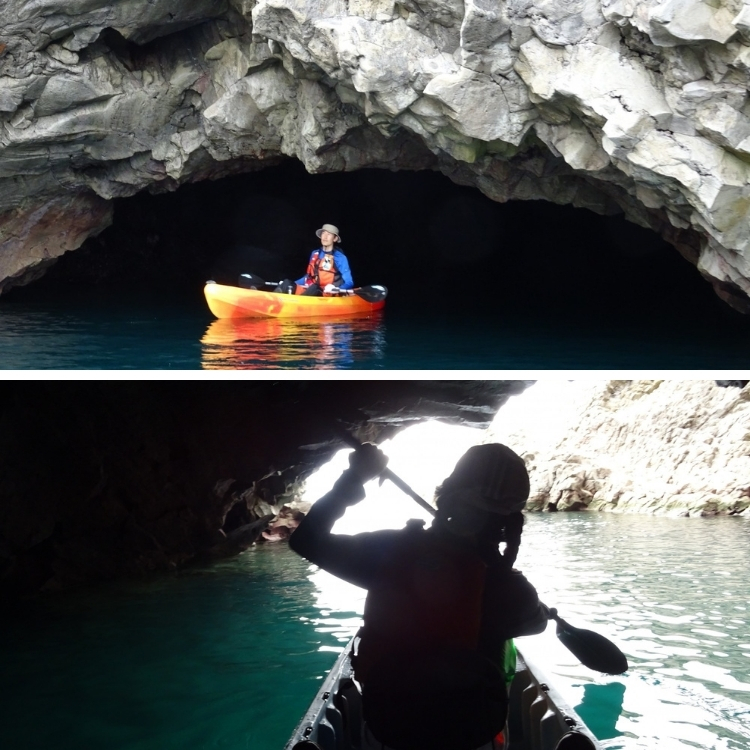
Top: The mouth of Gangara Cave is accessible by kayak only. Bottom: The cave was incredible, even on our paddle out. Photos: Greg Goodmacher
After our eyes adjusted to the darkness, we noticed hundreds, if not thousands, of bats roosting and flittering along the cave roof about ten yards above. Sunbeams at the cave entrance transformed the sea surface into a brilliant aquamarine color when we turned around. Blowfish stared up at us as we stared down at them. For moments, we savored the natural quietness and exotic nature of the cave before paddling outward.
Returning, we passed a solitary fisherman casting his line between close islets. I asked if he had caught any fish. He replied that he hadn’t, but he had caught a great view.
Shirakami Sanchi World Heritage Site – Anmon Valley Route
The following day, we drove to the Shirakami Sanchi World Heritage Site to explore a spectacular riverine trail within an eight-thousand-year-old beech forest.
The Anmon Valley Route winds through a narrow gorge that curves around steep fern-covered cliffs. The highlights are three cascading waterfalls ranging from 26 to 42 yards high. The third waterfall is closed to the general public to protect wildlife and human lives. The trail turns extra steep, wet, and slippery after the second waterfall. However, forest officials grant access to visitors hiking with eco-guides.
Reaching the second waterfall took slightly more than an hour of hiking/strolling. We often stopped to contemplate and photograph green moss carpeting felled trees, light filtering through trees clinging to cliffs, and golden leaves drifting slowly onto streams.
I heard the plunging waters before the waterfall became visible. My wife and I stood silent, mesmerized by the sparkling cascades. Then, impulsively, I waded into the pool at the waterfall’s base and submerged myself in the chilling and invigorating mountain water. Afterward, we sat on solar-heated rocks, ate sandwiches, and listened to the waterfall sing.
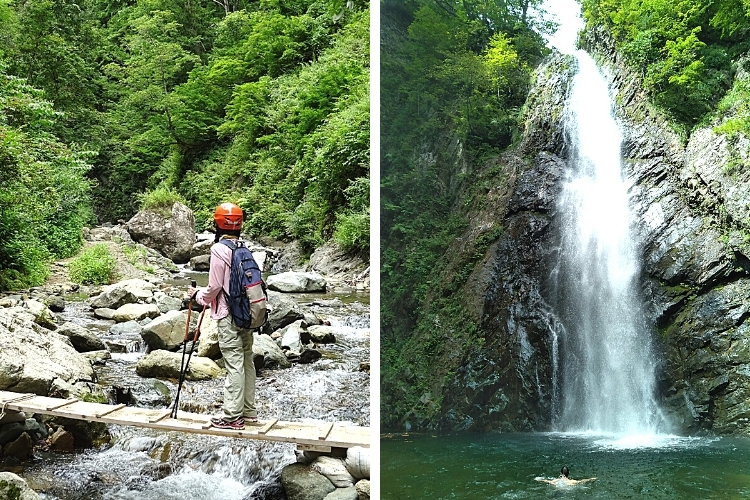
Left: We stood contemplating the beautiful river. Right: We swam underneath the chilling and invigorating waterfall. Photos: Greg Goodmacher
Shirakami Sanchi World Heritage Site – Conservation Center
We later dropped into the Shirakami Sanchi World Heritage Conservation Center to learn more about this spectacular region of ecological importance.
First, a friendly worker explained that the park was divided into two sections. The buffer zone, including the waterfall walk, is for the general public to enjoy. The protected core is only accessible to visitors who apply for permission and trek with local eco-guides. Then, he showed me a personal video he had taken of a healthy black bear strolling downriver while he was walking upriver in the core section. Both large mammals kept a respectful distance away from each other.
I spotted frogs, herons, eagles, hawks, squirrels, monkeys, river fish, Japanese raccoon dogs, martens, and more within a few days.
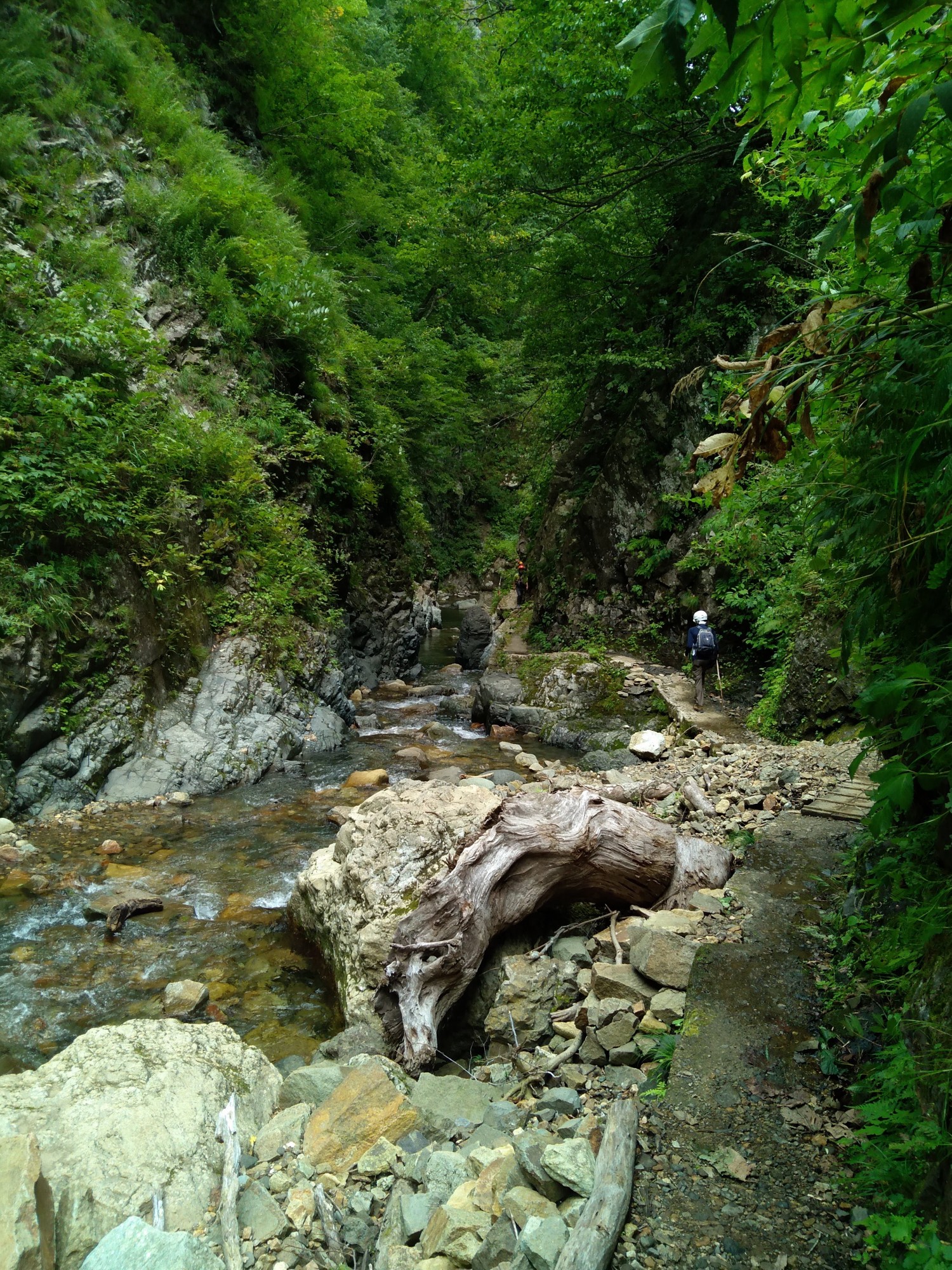
Many areas in northern Japan, including the Anmon River Valley, include rivers surrounded by lush greenery. Photo: Greg Goodmacher
The relatively undisturbed ancient forests provide habitats for many creatures and filter the melted snows. Northern Japan receives more snow than most areas of the world. As a result, rivers, streams, and waterfalls surge with pristine water surrounded by lush greenery. Maps show numerous brooks and streams where thirsty hikers can taste the mountains’ offerings.
The remote, steep-sided mountains and valleys provide kayakers, rafters, canoers, and river trekkers with many choices. Also, an amphibious bus drives around Tsugaru Dam and swims across Tsugaru Lake in Nishimeya, Aomori, a rustic village that borders the World Heritage Site.
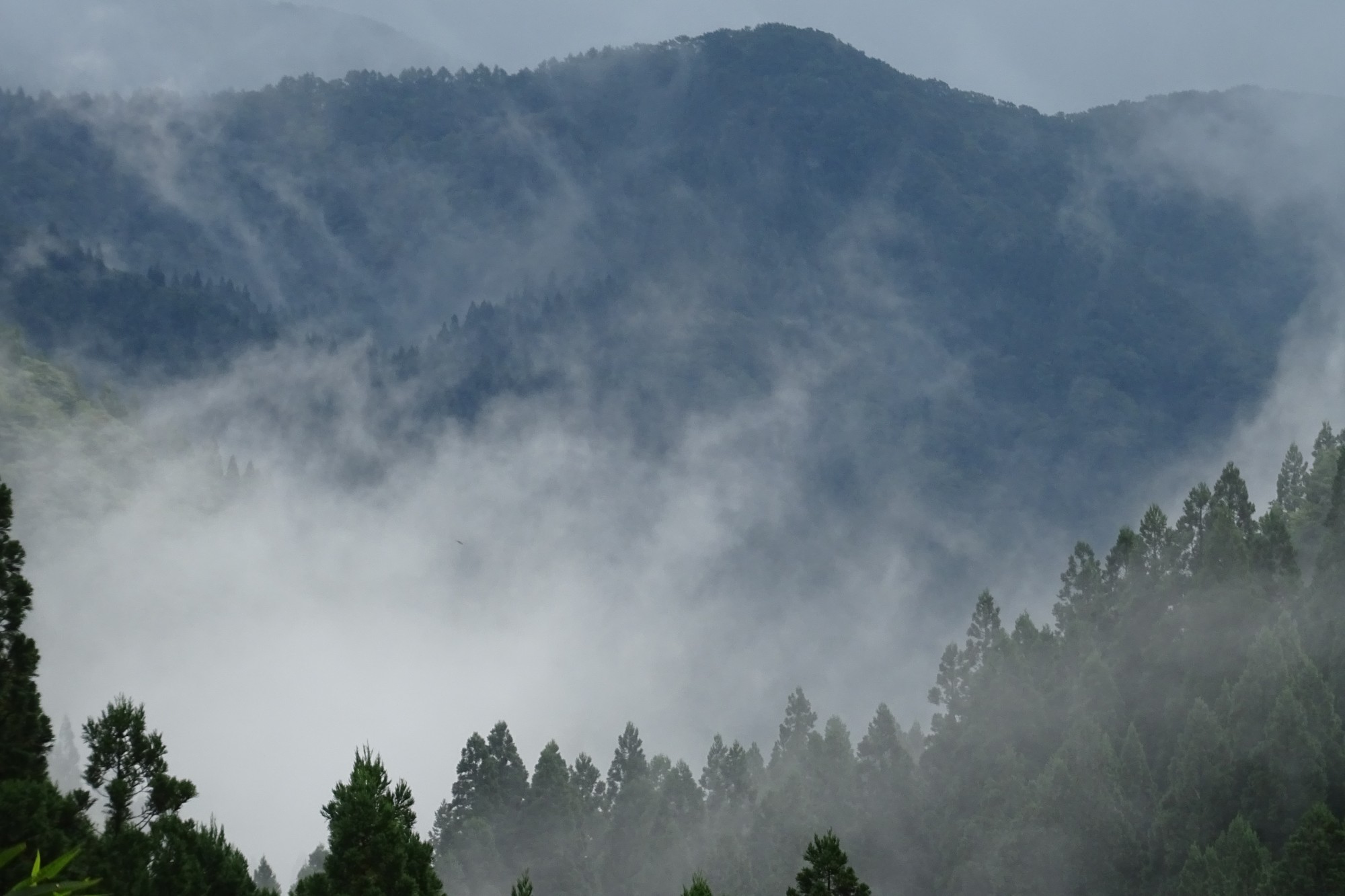
The remote, steep-sided mountains of Shirakami Sanchi provide kayakers, rafters, canoers, and river trekkers with many options. Photo: Greg Goodmacher
Canoeing Near Tsugaru Lake
Since my hotel was in Nishimeya Village, my wife and I chose a canoe trip through a section of nearby Tsugaru Shirakami Lake. We were the only canoers I saw on the vast lake. First, the guide from A’ Grove Canoeing and Rafting checked that we could safely manage our Canadian canoe. Then, he led us through a strange forest of still-standing leafless dead trees in the lake created when the dam was built.
However, the slopes leading down into the lake were lush and green, and, surprisingly, the air smelled like cookies. Our guide explained that we had detected the smell of Cercidiphyllum japonicum, which is often called the caramel tree.
The lake surface reflected the lush greenery on the slopes. Monkeys, our guide said, often come to the lake to feed on nuts and leaves. Unfortunately, though, we did not see monkeys until we were back on land. Instead, a great white heron glided gracefully by us and rested on a nearby tree. We also saw numerous small schools of tiny fish when we slid up the transparent shallow water of a small stream.
Ascending the tributary brought us to a warm sandy beach. Our guide surprised us by unfolding camping chairs and covering a small table with decorative fabric. Then, he served us locally produced apple pie and hot apple juice. Aomori is the apple basket of Japan. After our delicious snack, we headed back the way that we had come. Though the lake water was flowing slowly, time in the Shirakami Sanchi had flown much too fast.
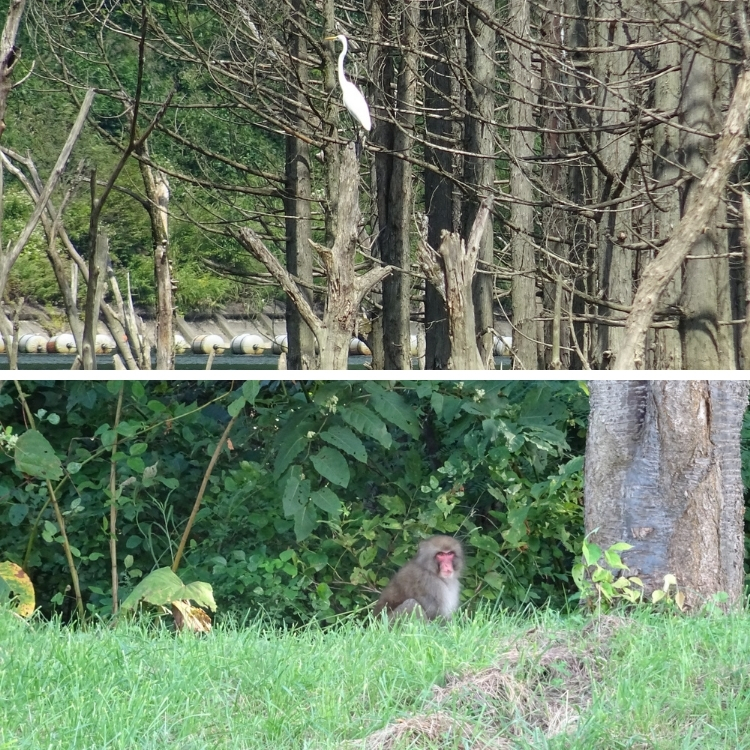
Top: A great white heron rested on a nearby tree, watching canoers. Bottom: We saw one of the locals when arriving back on land. Photo: Greg Goodmacher
Trip Summary
Tour: Sea Kayaking By Aone Shirakami Twelve Lakes
Tour: Canoeing By A’Grove Canoeing and Rafting
Accommodation: Green Park Mori-No-Izumi
To Get There: Hayabusa Shinkansen bullet train from Tokyo to Shin Aomori Station from Tokyo Station. Flights to Aomori from New Chitosei Airport in Hokkaido and Haneda Airport in Tokyo are also available. Take a local train to Hirosaki. Then, board a 50-minute bus from the Hirosaki Bus Terminal. Due to the remoteness of the region, driving a rental car is recommended.
Have you been to the world heritage site at Shirakami Sanchi and participated in any water sports? Share your insights in the comments below.

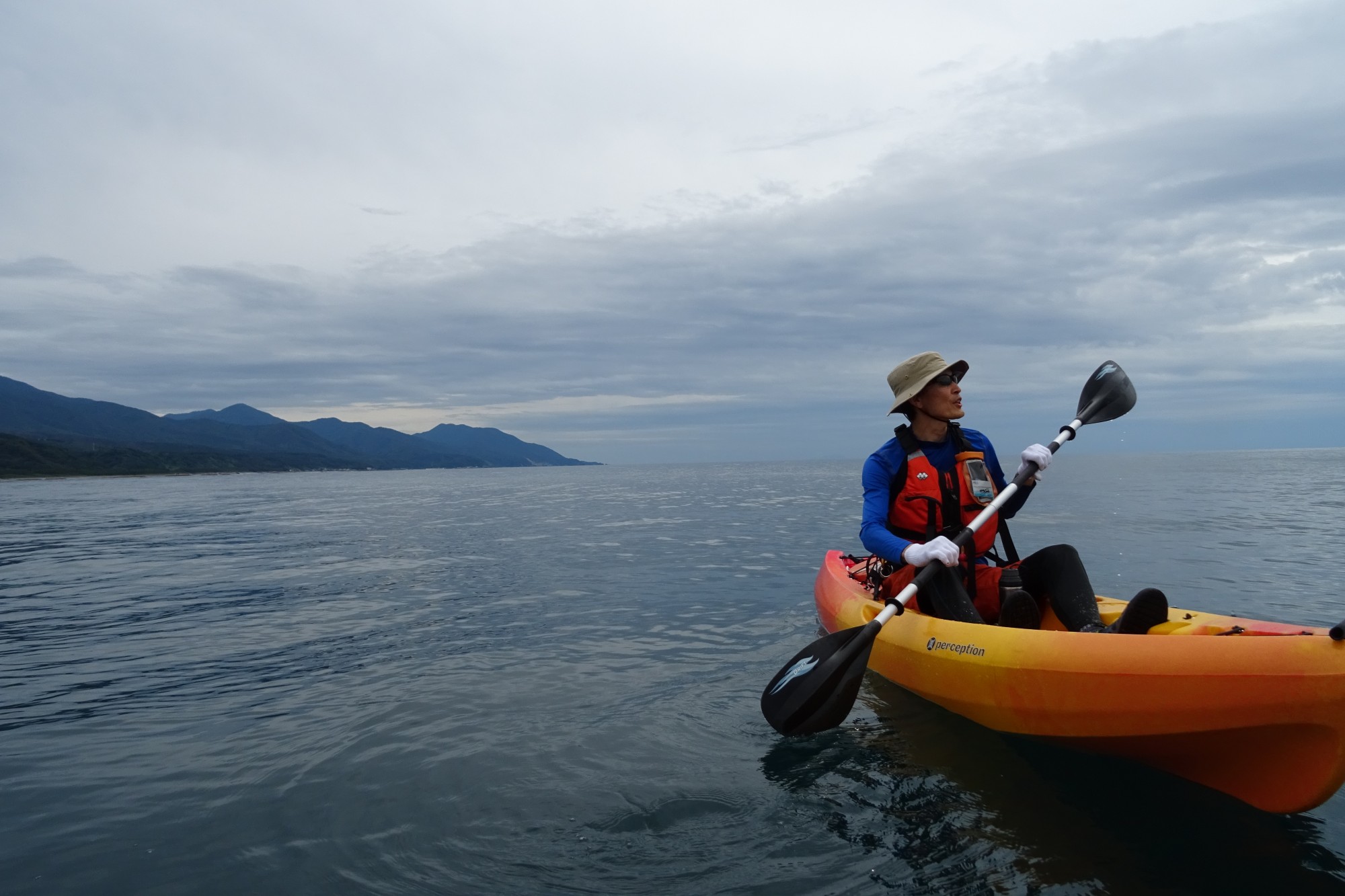
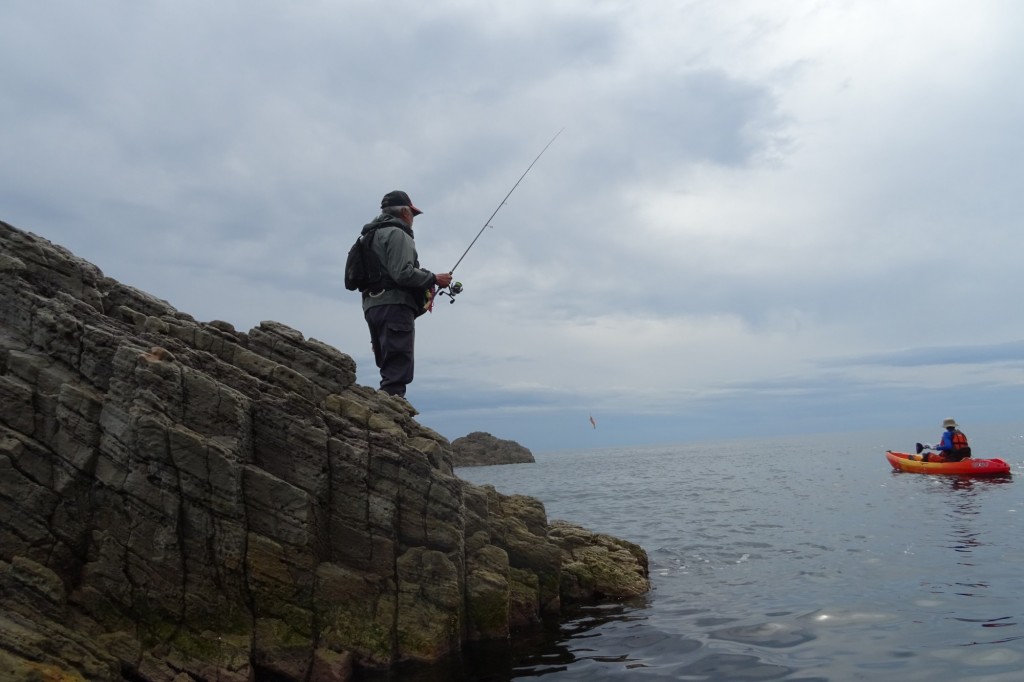
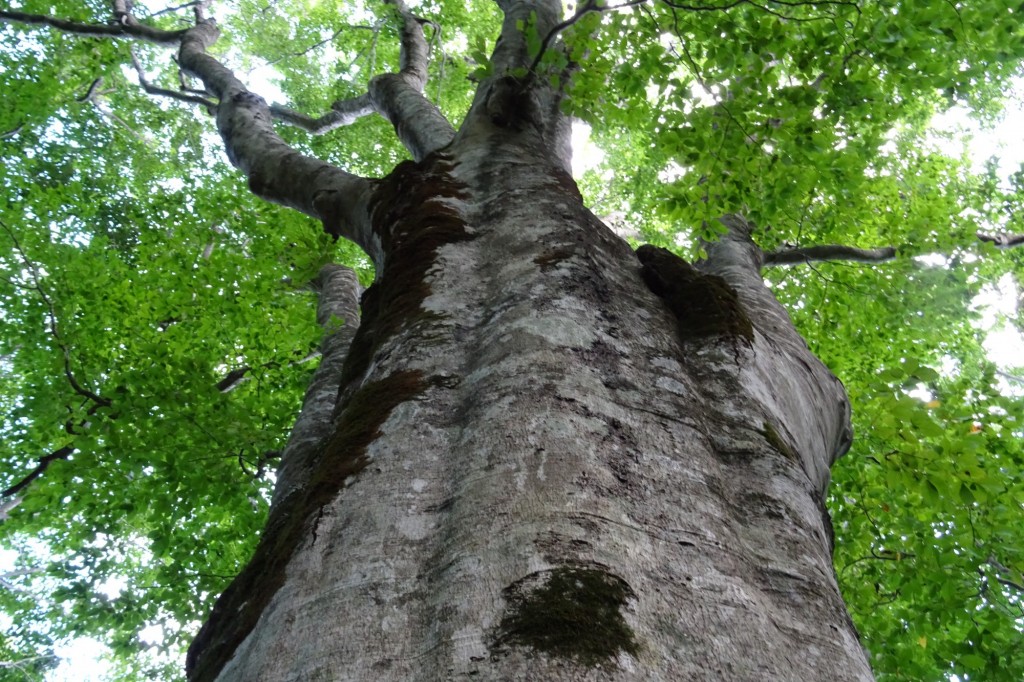
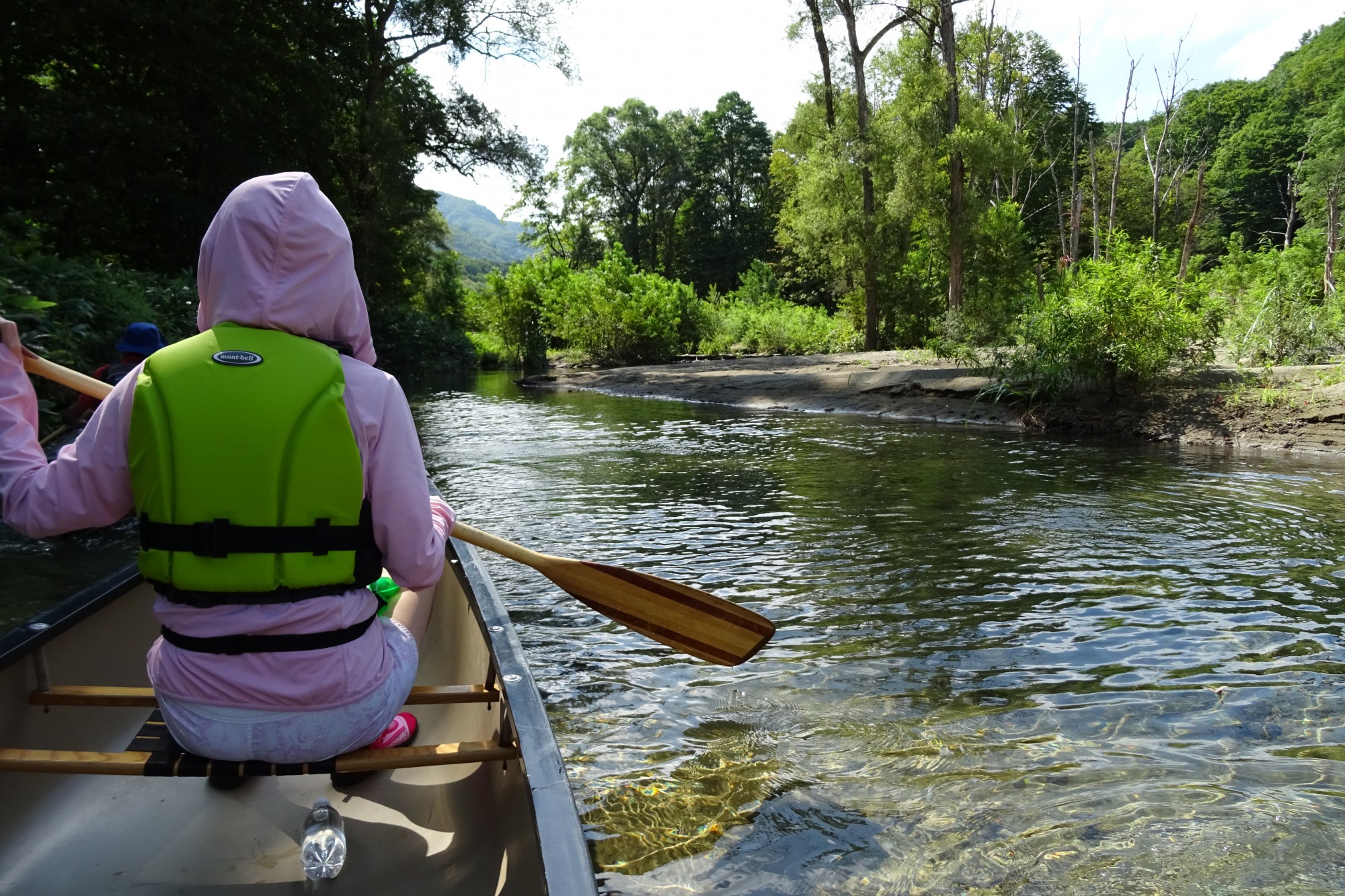
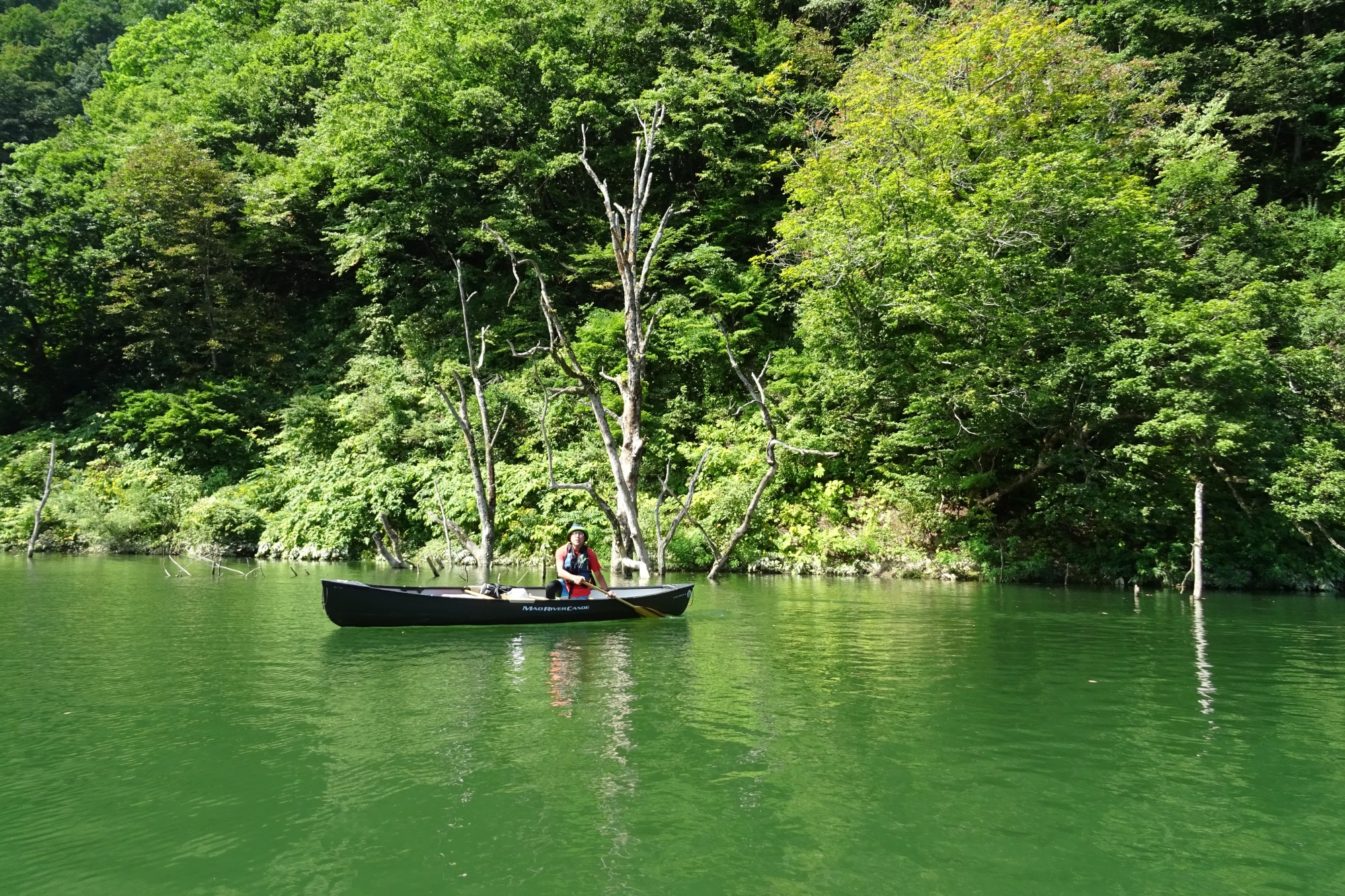
I was at the same place. It is a really beautiful location. The sunsets from the coast are amazing.
You are a great writer! “a yawning cliff crack that quickly swallowed our guide’s orange and yellow kayak”. Great article!